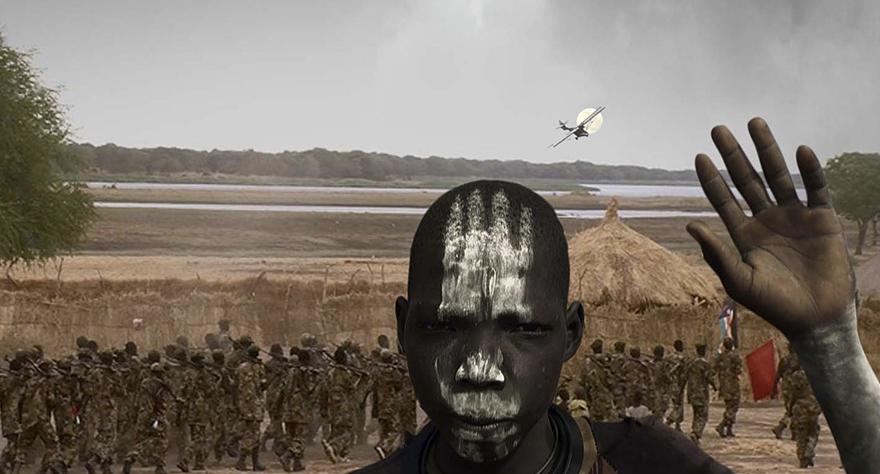
A raw glimpse into South Sudan that lacks conciseness, but mostly works due to its elemental, figurative approach.

A raw glimpse into South Sudan that lacks conciseness, but mostly works due to its elemental, figurative approach.
Cruising the skies of South Sudan, Director Hubert Sauper can see almost everything. Below lies the vast expanse of a fertile land abused and butchered by foreign powers and misused by its own government. The inhabitants scurry about like ants, escaping dwellings freshly christened by fire in a never-ending civil war. Sauper’s vehicle for this relatively remote surveillance is a tiny homemade prop plane. For now, the drama on the ground is but a distant nightmare, but soon, the director will land his quirky aircraft and witness the sad situation firsthand.
We Come as Friends narrates a history of colonialism and imperialism while documenting its modern day effects and continuance. It’s a narration made through the lens of an outsider as well as through the clamoring voice of the Sudanese people, but the impact of its message is most richly felt when the language being spoken is entirely visual.
Near the start of the film, a villager says: “Did you know that the moon belongs to the white man?” It’s a recurring line and when coupled with the title We Come as Friends, it becomes an evocation of eerily relevant science fiction imagery. In the hordes of glad-handing profiteers, self-satisfied peacekeepers and pushy missionaries, Sauper paints a portrait of an alien invasion. He shoots South Sudan as a remote and ravaged faraway planet with wordless, upside-down aerial footage, shots of spectral dust clouds rolling across the plains and lightning bolts disrupting an unfathomable darkness. In these quiet, observational moments, the film’s ideas are made distressingly potent. A hub of exploitation and a collision point for resources between the U.S. and China is transformed into a haunting landscape headed toward an apocalypse.
The sense of warped reality and dark prophecy is very strong, but We Come as Friends is not a pure tone poem in the vein of Godfrey Reggio’s Koyaanisqatsi or Herzog’s The Wild Blue Yonder. Much of the doc is done in the style of cinéma vérité, sporting rough, handheld camerawork and interactions that run largely uncut. The approach yields something that feels incredibly raw, and the aesthetic both helps and hurts the film. On the one hand, the audience is brought closer to the realism of the subject, but more overpoweringly, it blunts a lot of the message’s white-knuckle impact. Conversations ramble with little direction and linger unnecessarily while those that do stay on topic prove to be frustratingly insistent in the way they are prompted and one-note in the extent of their insight.
An editing problem is mainly what the film suffers from, and Sauper’s lack of thematic progression only compounds the issue. He speaks with embedded evangelists, aid workers, local community leaders and even a bomb diffuser (to name just a few of the subjects) and through it all, the same general notion is reinforced: Sudan is falling apart, the walls are closing in and the ideal of self-sufficiency is being replaced by institutions of foreign interest. Not too far into the film, one gets the feeling that the director has exhausted what he had to say, causing the remaining material to come off as monotonous and repetitive. It simply loses steam, circling the issue with a choppy sense of focus and direction.
In spite of its loose structuring and thin thesis, We Come as Friends emerges as a genuine, sporadically unsettling and urgent piece of work. Its detours into more allegorical, “unreal” territory is refreshing, and if it weren’t for a slightly inconsistent vision and the lack of conciseness needed to maintain that urgency and meaning, this could have very well been one of the year’s standout docs. Instead, it is a halfway engaging, mostly fascinating and somewhat jittery experimental snapshot of a deeply troubled place, one that unfortunately exists outside the make-believe realm of science fiction lore.